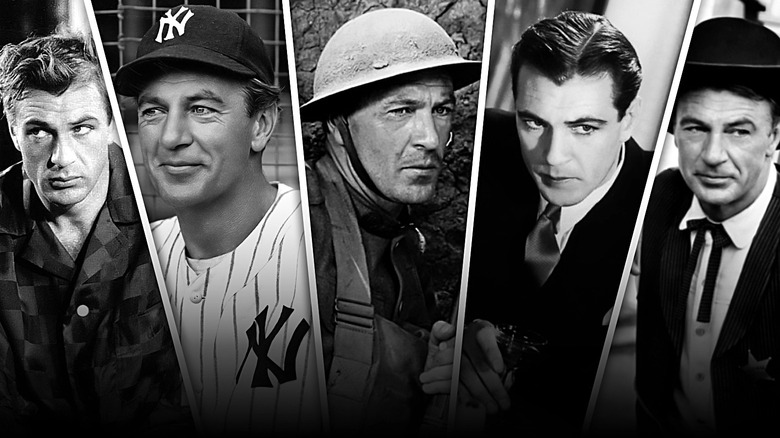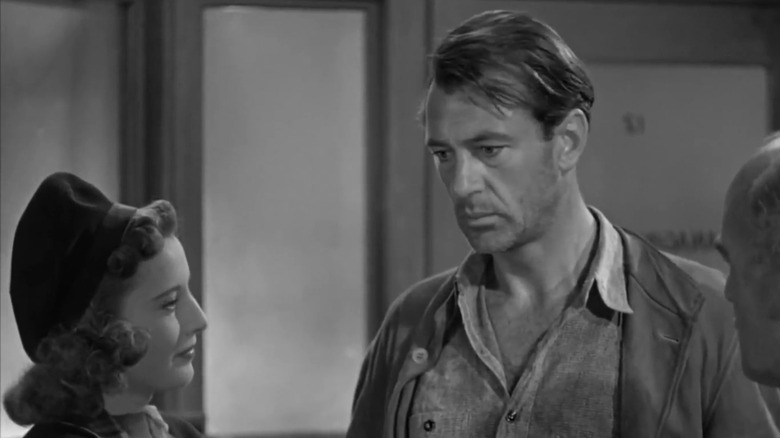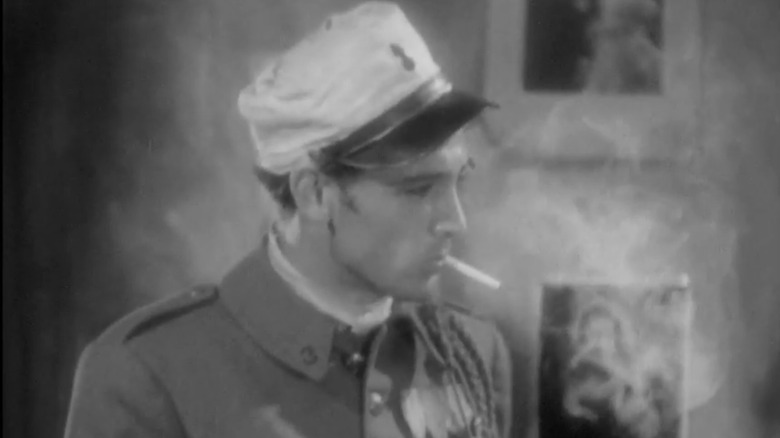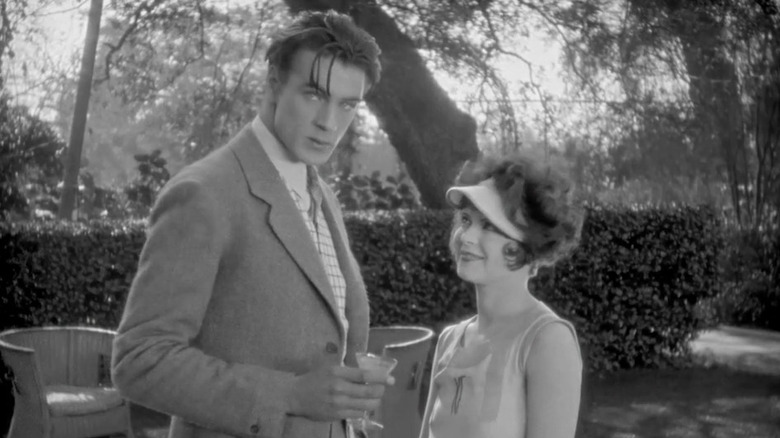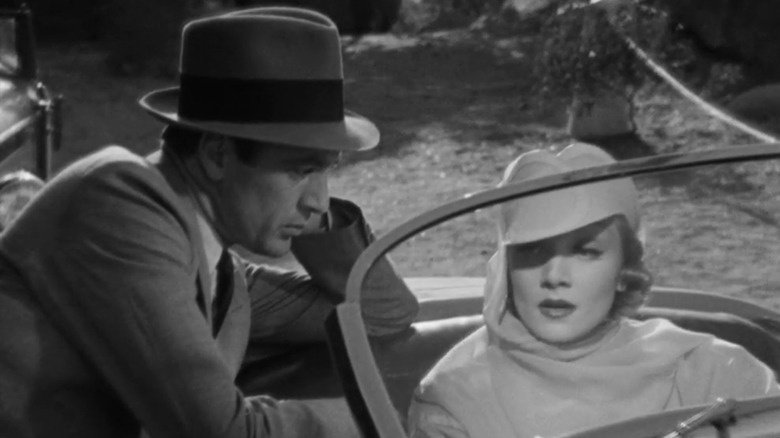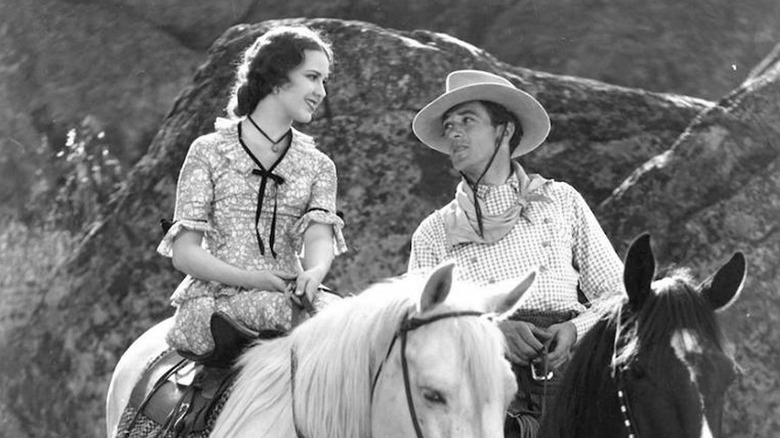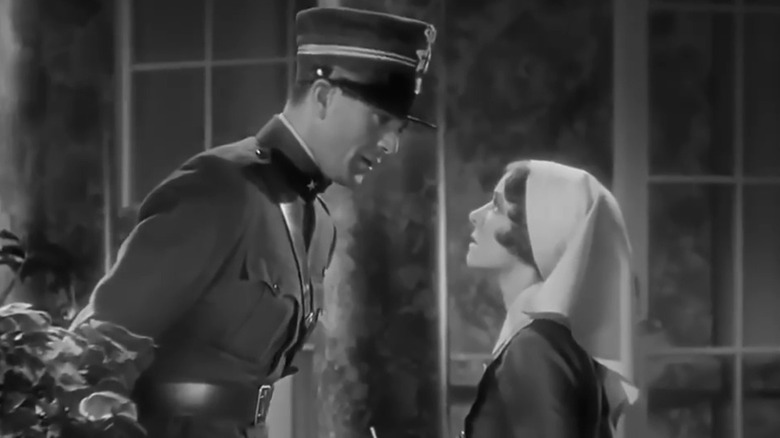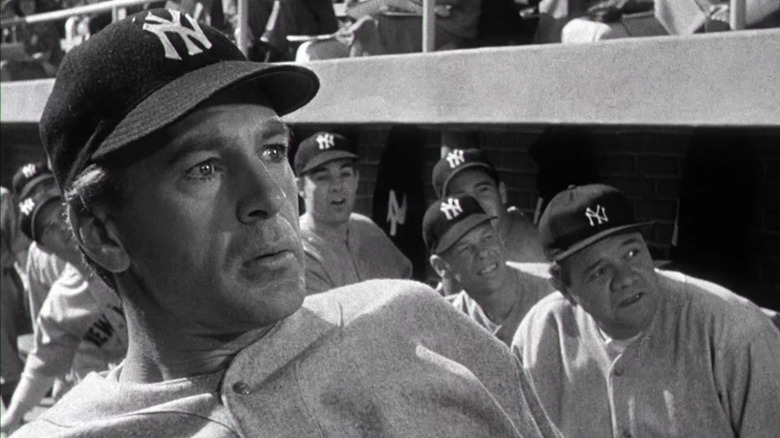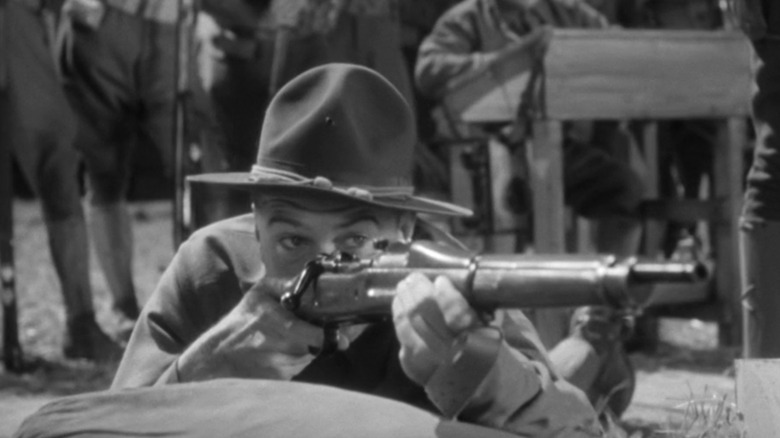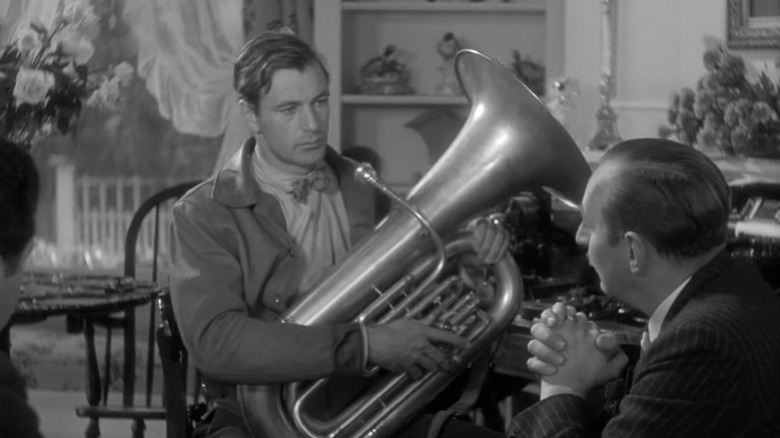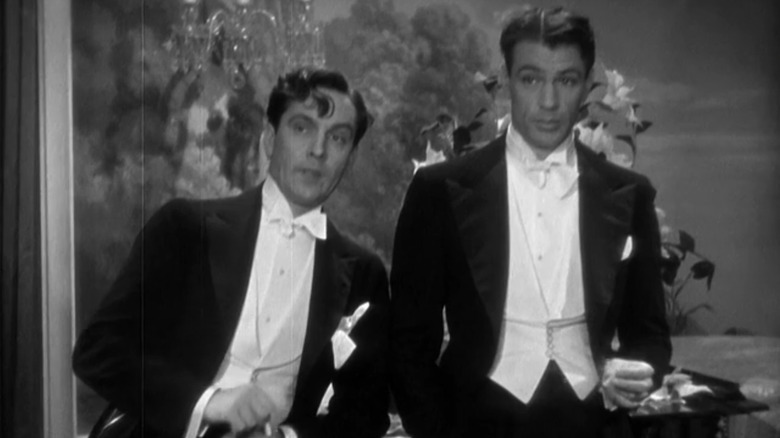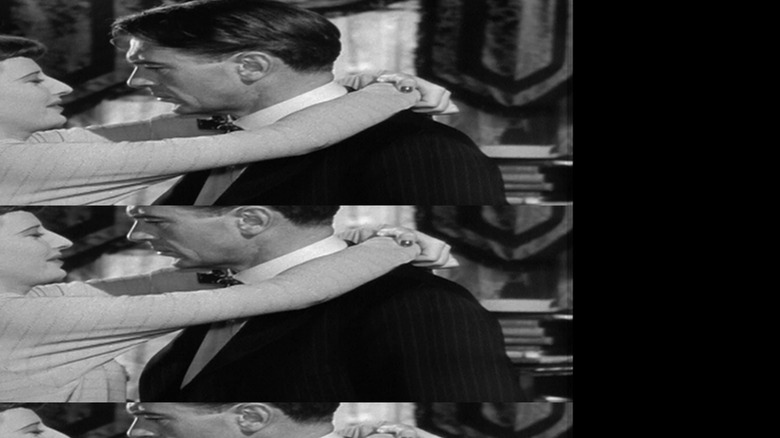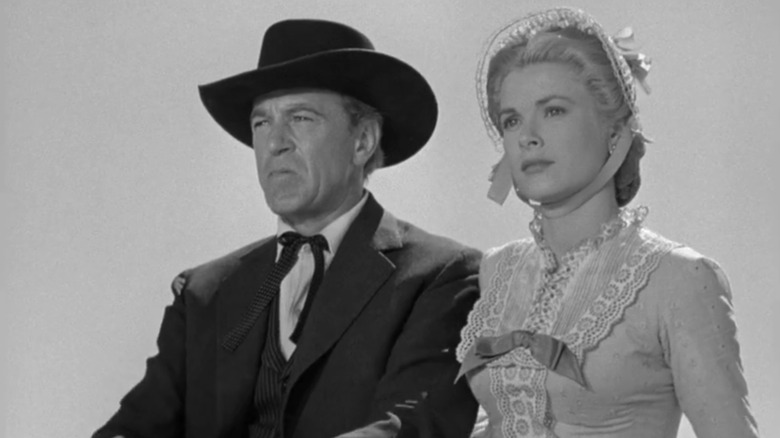The 12 Best Gary Cooper Movies, Ranked
Before all the modern day movie stars that fans obsess over on a daily basis, there was Gary Cooper. Tall, handsome, and with an (*ahem*) reputation in Hollywood for romancing starlets, he dominated the silver screen for decades. Cooper got his start during the silent era, when he made a name for himself as a romantic lead, before being one of the lucky male stars to transition successfully into talkies. Beginning in the 1930s, he hopped from genre to genre, starring in action adventure pictures and Westerns as well as showcasing a natural affinity for comedy.
During his time in Hollywood, he was nominated for five Academy Awards and took home two, in addition to earning an Academy Honorary Award just weeks before he died from cancer in 1961. His work as an actor was impressive, but his reputation and legacy are larger-than-life. There were rumors of romances between him and pretty much every woman he acted with, he was close friends with Ernest Hemingway, and despite being a conservative in Hollywood during the Red Scare, he never named names.
Here are 12 of the very best Gary Cooper films from over the course of his long and storied career — and trust us, picking just 12 was the hardest part about putting together this list.
Meet John Doe
"Meet John Doe" is one of Frank Capra's schmaltzy, all-American dramas, but that doesn't mean it's not capable of eliciting some honest-to-god emotions from even the most cynical audiences. Cooper stars as Long John Willoughby, a tramp struggling with alcoholism who is hired by Barbara Stanwyck's journalist Ann to play her John Doe, an anonymous figure who (allegedly) wrote into the paper to rail against the troubled state of society. But as his fake letters to the editor become more and more popular, they take on a life of their own, even inspiring a popular movement.
"Meet John Doe" may be packed full of maudlin sentimentality, but that doesn't mean it doesn't also contain genuine sentiment. This is largely thanks to Cooper's sturdy yet emotionally impactful performance as John and the chemistry he has with Stanwyck. Is it their best collaboration? No, that's probably a different 1941 film they starred in together, which we'll talk about later. But it's pretty high up there, as evinced by its box office numbers and the fact that it took home the Academy Award for Best Original Story.
Morocco
An early sound picture for Gary Cooper, "Morocco" saw him collaborate with German star Marlene Dietrich for the first time (and if the rumors are true, they did a lot more than just collaborate). But there's no getting around the fact that the set was incredibly chaotic, especially because the director Josef von Sternberg was sleeping with Dietrich, and Cooper openly hated working with him. Although Cooper and Dietrich eventually became lovers themselves, she was none too impressed with him as an actor during their first picture together, allegedly saying (according to Turner Classic Movies), "Cooper was neither intelligent nor cultured. Just like the other actors, he was chosen for his physique, which, after all, was more important than an active brain."
But however she may have felt about her co-star's talents, their chemistry was undeniable. With Dietrich as a slinky, gender-bending night club performer and Cooper a passionate French Legionnaire, it's hard not to fall in love with the two of them together. Although "Morocco" isn't one of Cooper's best known films today, it performed well, earning an Academy Award nomination for Best Actress (Dietrich) and Best Director (von Sternberg).
Children of Divorce
In the midst of the silent era, Gary Cooper starred in the romantic drama "Children of Divorce," which tackled one of the hot-button issues of the time — divorce. (Gasp!) It revolves around the complicated courtship of three young people who met as children, each grappling in their own way with their parents' respective divorces. Now grown, they're unsure of how they want to approach marriage for themselves. Ted (Gary Cooper) is a carefree man from a wealthy family who has been in love with Jean (Esther Ralston) since childhood, but is fooled into marrying Kitty (Clara Bow) after waking up next to her after a night of partying, assuming that they had slept together.
This was one of Cooper's very first starring roles, a part that was given to him largely thanks to his romantic relationship with Bow, who was a bigger name at the time and went to bat for him in a big way. The producers of "Children of Divorce" were rewarded for their gamble, and Cooper shot to stardom in large part due to the charm of his performance here.
Desire
Gary Cooper and Marlene Dietrich had made a splash together with their performances in "Morocco," but despite their simmering chemistry, there were still some kinks to work out. "Desire" is when we see the twosome really firing on all cylinders. In it, Dietrich plays Madeleine, a con woman on the run with some very expensive jewelry, fleeing France for the Spanish border. But along the way, automobile engineer Tom Bradley (Gary Cooper) gets caught up in her endless schemes.
Although she does everything in her power to cause him grief (hiding the pearls in his jacket, stealing his car, accidentally crashing his car, etc.), the two inevitably fall in love with one another. (But since this is 1936, and the Production Code was rearing its ugly head, Madeleine has to atone for her crimes in order to earn her happily ever after.) Dietrich considered it one of her best films, writing in her biography "Marlene Dietrich: My Life," "The only film I need not be ashamed of is 'Desire,' directed by Frank Borzage and based on a script by Ernst Lubitsch. I found Gary Cooper a little less monosyllabic than before." High praise, indeed!
The Virginian
In 1929, Gary Cooper starred as The Virginian, a Western about a young man having a crisis of conscience over the less-than-savory career trajectory of his best friend, who has chosen to become a cattle rustler rather than embracing a more honest profession. Westerns were popular from the very beginning of cinema — one of the earliest narrative films to catch on with audiences was "The Great Train Robbery" in 1903 — but throughout the silent era, they were still solidifying the tropes that would become part and parcel for the genre. One of these was the idea of the noble, solitary Western hero, a definitive example of the honor and masculinity of the idyllic cowboy hero.
"The Virginian" also marked Gary Cooper's first talking picture. Unlike several silent film stars, whose voices didn't translate well to the sound era either as a result of strong accents or a pitch that didn't suit their on-screen persona, Cooper's deep, no-nonsense voice was a perfect fit for his earnest, all-American aesthetic. Given his impact on the Western genre as one of its greatest stars, it's fitting that two especially strong Westerns bookend his career, from his first talkie to a 1952 production that came when his tenure as a leading man was waning — but more on that later.
A Farewell to Arms
Based on a novel by Ernest Hemingway released three years earlier, "A Farewell To Arms" stars Gary Cooper as an ambulance driver during World War I, whose life is changed forever when he falls in love with a nurse (Helen Hayes). It was directed by Frank Borzage, who collaborated with Cooper several times over the course of his career, and was well-received by critics, earning four Academy Award nominations (for Best Picture, Art Direction, Best Cinematography, and Best Sound Recording — it won the latter two).
A tragic World War I romance, "A Farewell To Arms" won over the hearts of even hardened reviewers. Mordaunt Hall of The New York Times — despite grumbling about how the book was better than the movie — praised its performances, writing, "Gary Cooper gives an earnest and splendid portrayal of Lieutenant Henry." (He also talks about how cute it is that Gary Cooper is so tall and Helen Hayes looks so little next to him, proving that 1940s critics are way more like us than we thought.) Cooper starred in another Ernest Hemingway film adaptation nearly a decade later, 1943's "For Whom the Bell Tolls," alongside Ingrid Bergman, which was also a major success.
The Pride of the Yankees
One of a handful of biopics that Gary Cooper did over the course of his career, "The Pride of the Yankees" saw the actor take on the role of Lou Gehrig, a legendary baseball player for the New York Yankees whose career was cut tragically short when he was diagnosed with Amyotrophic lateral sclerosis (more commonly known as ALS, or Lou Gehrig's Disease). Gehrig himself died of the disease just a year before "The Pride of the Yankees" was released.
Although Cooper wasn't much of a baseball player (nor was he left-handed, as Gehrig was), he worked as hard as he could to do the Yankee star justice, even learning to bat left-handed. Interestingly, several of Gehrig's teammates appear as themselves in the film, including Babe Ruth and Bill Dickey. In fact, the extreme weight loss regime Babe Ruth was subjected to so he could believably play a younger version of himself ended up landing him in the hospital.
"The Pride of the Yankees" was a major critical and popular success. It earned 11 Academy Award nominations, including one for Cooper and his costar Teresa Wright, who played his wife. Nowadays, it's widely considered one of the best sports movies of all time.
Sergeant York
When it comes to propaganda films meant to inspire audiences with tales of all-American heroes, World War II-era directors were firing on all cylinders. "Sergeant York" is a prime example of the kind of wartime release that really captured the imaginations of 1941 viewers, many of whom saw it in theaters as the United States was preparing to enter the war. Alvin York was a folk hero from World War I, who went from the backwoods of Tennessee to become a conscientious objector before eventually serving in the Army as one of its most illustrious sharpshooters.
A patriotic hit that came at the exact right time for American audiences (and was frequently shown well past its initial release as part of recruitment drives), "Sergeant York" became the highest-grossing film of the year. It earned 11 Academy Award nominations, including two wins — one for Gary Cooper as Best Actor (his first) in the lead role of York, and one for William Holmes for Best Film Editing.
Although some critics of the time noted its spectacularly unsubtle war propaganda, they also argued that Cooper's performance helped give the film much needed depth. Bosley Crowley described Cooper in his review for The New York Times as, "the gaunt, clumsy yokel, the American hayseed to the life — the proud, industrious, honest, simple citizen who marches in the forefront of this nation's ranks." Over 80 years later, it's still one of the best war movies based on a true story.
Mr. Deeds Goes to Town
"Mr. Deeds Goes to Town" is a sentimental film that celebrates the humble charms of the American everyman. In it, Gary Cooper plays Longfellow Deeds, a simple man with simple tastes, who's perfectly happy writing the sappy sayings that go on the inside of greeting cards and playing in his town's band. But he's thrust into a larger world when he discovers that he's been left a vast fortune, giving him certain big-city responsibilities. The finance guys think he's going to be an easy mark, that they'll be able to manipulate him into doing whatever they want with the money.
There's a lot more to Deeds, however, than they expected. He's full of folksy charm, to be sure, but also grit, backbone, and an ironclad set of values. And when it's clear he's going to give them trouble, they attempt to have him declared mentally incompetent so that they can take control of his fortune by brute force. "Mr. Deeds Goes to Town" saw Cooper earn his first Academy Award nomination for Best Actor, in addition to a Best Picture nomination, a win for Frank Capra for Best Director, and nods for its script and sound recording. So it's far better than Adam Sandler's remake, especially since it's not even one of Sandman's best movies.
Design for Living
Films over the first few decades of cinema were breaking new ground left and right, but we're pretty sure that "Design For Living" has to be one of the earliest examples of an on-screen throuple. Directed by Ernst Lubitsch with his trademark racy, pre-Code sense of humor, it stars Fredric March and Gary Cooper as a pair of artists — one's a novelist, the other's a painter — who both fall in love with the same woman (played by the delightful Miriam Hopkins). Over the course of the movie, she flip-flops between the two of them, basically in love with whichever one happens to be in front of her at the time.
But it's clear to all of us that these three work best together as a unit, and shockingly (especially for the times), that's the conclusion the movie comes to in the end as well. "Design For Living" closes with a "gentleman's agreement" between the three of them in the backseat of a car, as Gilda (Hopkins) kisses each man in turn, their decision to return to Paris together as a trio apparently sealed. It wears its bisexual heart on its sleeve, and there's genuinely not another movie from the era quite like it as it paves the way for some of the best screwball comedies Hollywood had to offer.
Ball of Fire
During his many years in Hollywood, Gary Cooper was known for playing strapping, athletic, all-American heroes. Which is why his performance in "Ball of Fire" is such a delight, giving a wink to the camera while playing completely against type. In it, he stars as Professor Bertram Potts, a linguistic expert who leads a group of academics in painstakingly cobbling together a new encyclopedia. They've been sequestered together in a large manor house for ages, the isolation allowing them to focus more intently on their work.
But all of that is thrown for a loop when Potts encounters Sugarpuss (Barbara Stanwyck), a brassy dame who may or may not be dating a mob boss, and lets her stay with them so that she can help him with his research on slang. Although he's prim and prudish, she has an immediate effect on him and his work, showing that opposites attract, and the bookish intellectual and the nightclub singer can have a happily ever after in the end. Barbara Stanwyck is at her teasingly antagonistic best, as she toys with the poor, sweet professor, and Cooper seems to be having the time of his life playing the sort of role he was so rarely offered.
High Noon
Gary Cooper starred in many Westerns during his time in Hollywood — that was kind of what you did when you were an aging leading man in the 1950s. But without a doubt, his very best (and maybe one of the best Westerns, period) was "High Noon," a surprisingly thoughtful production that wears its politics on its sleeve (a risky move in the midst of the Hollywood Red Scare). Cooper plays Kane, a marshal in a Western town who is faced with a difficult choice: Upon the release of a criminal he put away several years earlier, he either has to stay and fight the man who is returning for revenge, or flee with his wife (Grace Kelly).
Unlike many leading men in Westerns, who are ruggedly individualistic, Kane attempts to get his friends and fellow townspeople to help him out in his moment of need. But — and this is the part that speaks to the climate in Hollywood, where members of the film community were being asked to testify against one another or risk their own careers — when it really counts, they let him down. The screenwriter of "High Noon," Carl Foreman, refused to testify to the House Un-American Activities Committee, leading to his blacklisting while the film was still in production. Foreman later said, according to "High Noon: The Hollywood Blacklist and the Making of an American Classic," "Cooper was the only big one who tried to help. The only one."
Earning Gary Cooper his final competitive Academy Award, "High Noon" is now a certified classic emblematic of the choice to stand up against evil — even when that means standing alone.
